The ruby is one of the most revered gems in the world, known for its stunning red color, exceptional hardness and timeless charm. A variety of the mineral corundum, rubies have been prized in various cultures for centuries. This blog looks at the different types of rubies, their global origin and the factors that contribute to their lasting value.
Table: Types of Ruby Gemstones
| Ruby Type | Origin | Color Range |
| Burmese Ruby | Myanmar (Burma) | Pigeon Blood Red |
| Thai Ruby | Thailand | Dark Red, Brownish Red |
| Mozambique Ruby | Mozambique | Bright Red |
| Afghan Ruby | Afghanistan | Purplish Red |
| Tanzanian Ruby | Tanzania | Pinkish Red |
| Sri Lankan Ruby | Sri Lanka | Light Red, Pinkish Red |
| Indian Ruby | India | Brownish Red |
| Kenyan Ruby | Kenya | Dark Red |
| Madagascar Ruby | Madagascar | Pinkish Red, Orangish Red |
| Pakistani Ruby | Pakistan | Pinkish Red to Deep Red |
Description of Rubies Types
Burmese Ruby

Burmese’s rubies are well known as the ruby illusion par excellence, famed for their legendary ‘pigeon blood’ red of a deep and intense colour with a faint bluish overtone. The principal sources of these rubies are the Mogok and Mong Hsu Valleys within Myanmar, and their history is centuries old. Burmese rubies are some of the most extraordinary gemstones on the planet; their clarity is exceptional, and their saturation vibrantly intense — a gemstone sought after by both collectors and jewelers for their unmatched beauty.
Thai Ruby
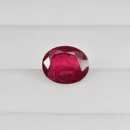
The Chanthaburi and Trat region’s Thai rubies, for instance, are recognized for their darker color, which may only be dark red or brownish red. These rubies are not as vivid as Burmese rubies, but they have elegant, charming, and unique depth of color. Thai rubies were mined extensively during the beginning of the 20th century, profiting by their affordability and reliable supply, thus becoming a staple in the general gem market.
Mozambique Ruby
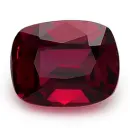
Since the discovery of the Montepuez mine in 2009, Mozambique has quickly become a dominant source of rubies, quickly putting its stamp on the gemstone world. Mozambique rubies are prized for their vibrant bright reds and often fluorescence which intensify its brilliance. Mozambique rubies feature a vibrant color, with affordable price, and have become a favrite for modern jewelry design.
Afghan Ruby

Afghan rug rubies come from the jagged land of the Jegdalek mines and are famous for their purple red color. Discovered in the 1970s, these gemstones tell the dramatic story of this volatile but resource rich region and the difficult conditions of mining. Gem grading laboratories are quick to insist that Afghan rubies are rare finds, and in the gem market, they are truly distinctive: Their color is red with subtle purples; nothing like that coloration exists anywhere else.
Tanzanian Ruby
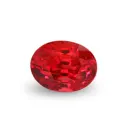
Other ruby varieties tend to have a brighter shade of red, while Tanzanian rubies — alternating from the Winza and the Longido region since the 1960s — are less saturated, but have a softer palette of red hues. Tanzanian rubies are also understated elegance and able to hold subtle color variations, which makes them a great alternative if you want a gem that’s more delicate and elegant.
Sri Lankan Ruby
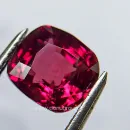
The light red to pinkish hues and excellent clarity of Sri Lankan rubies have earned them their historical name Ceylon rubies. Being the region with rich deposit of gemstones, the Ratnapura region had been the main supplier of the rubies for ancient time as well as for the present day. Because of their softer color tones, excellent transparency, and a great intriguing effect from a fortunate internal reflection, Sri Lankan rubies are much sought after.
Indian Ruby
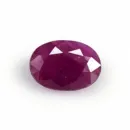
Indian’s rubies mainly from Orissa and Mysore are reddish brown in tone and historically important. A duller ruby than most other rubies, these gemstones are nonetheless part and parcel of Indian culture and used quite often in the traditional jewelry. Apart from the fact that their affordability and cultural significance is there, incentives in the regional markets.
Kenyan Ruby
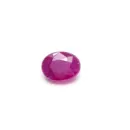
Kenyan’s rubies discovered in the 1970’s are famous for their particularly intense red colors and highly striking vibrancy. Of these, the rubies found primarily in Mangare have achieved steadily increasing recognition in the global gem market due to their bold hues and excellent quality.
Madagascar Ruby
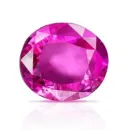
Those rubies from the Ilakaka and Andilamena regions of Madagascar demonstrate a wonderful range of color from pink-red to orange-red. Rubies such as these first started to be discovered in the 1990s and were quickly adopted as an important resource for the gemstone industry. They are also very diverse in quality and color, on a spectrum from rough to polished, for the collection, and for the common user.
Pakistani Ruby
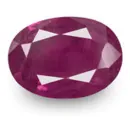
Pakistani’s rubies, which are mostly mined in the Hunza and Swat valleys, come in a variety of blue pinks to deep crims. Rubies are particularly famous in the Hunza Valley for being of very high quality, something pretty equal to the rubies of the Chine Myanmar. Undiscovered more recently have been the rubies from the Swat Valley, adding to Pakistan’s reputation as a gem producing area. Additionally, the setting for these rubies is challenging terrain and a rich history in culture.
History and Significance of Ruby
Rubies have played an essential role in the history and culture of many civilizations. The word “ruby” comes from the Latin “ruber”, which means red. Throughout history, rubies have symbolized power, passion and protection. They were used in royal jewelry, religious objects, and as talismans for warriors and kings.
Burmese rubies, in particular, have a long and rich history, often appearing in the crowns and jewels of European royalty. The Mogok Valley in Myanmar, where these rubies come from, has been known for centuries for the production of the most beautiful rubies. Other regions, such as Thailand and Sri Lanka, have also contributed significantly to the global rubies market.
Pakistan’s rubies deposits, although less known than those in Myanmar or Sri Lanka, have attracted attention for their quality and the rich history associated with their mining. The rugged terrain of the Hunza and Swat valleys add to the mystique and value of these rubies, making them a prized possession for gem collectors.
The value of rubies is determined by many factors, including color, clarity, and size and carat weight. The most valuable rubies have an intense, deep red color, often called “dove’s blood.” Its rarity, combined with its hardness, second only to diamonds, makes it one of the most valuable gems in the world.
❓ Frequently Asked Questions About Ruby Gemstone
A ruby is a precious gemstone made of the mineral corundum, colored red by trace amounts of chromium. It is one of the traditional cardinal gems, valued for its vibrant red hue, hardness, and rarity.
The finest rubies are historically sourced from Myanmar (Burma), particularly the Mogok Valley. Other notable sources include Thailand, Sri Lanka, Mozambique, and Madagascar.
To identify a real ruby:
Check for imperfections under magnification (natural rubies often have inclusions).
Perform a scratch test (rubies score 9 on the Mohs scale).
Use a professional gemological lab for verification, such as GIA or IGI.
Rubies prices vary widely based on color, clarity, carat, and origin. High-quality Burmese rubies can cost between $1,000 to over $100,000 per carat. Treated or synthetic rubies are significantly less expensive.
The most prized ruby color is “pigeon blood red”—a deep, vivid red with a hint of blue. This color grade commands the highest prices and is mainly found in Burmese rubies.
According to Vedic astrology, Ruby is recommended for Leo (Simha Rashi). It is associated with the Sun and is said to enhance leadership, confidence, and health.
Yes, ruby is the traditional birthstone for July. It is also used to celebrate the 15th and 40th wedding anniversaries.
Clean your ruby with lukewarm water, mild soap, and a soft brush. Avoid ultrasonic and steam cleaners if the ruby is fracture-filled or heat-treated. Store separately to prevent scratching other gems.
Conclusion
Rubies, with their vivid red hues and rich history, continue to fascinate gem lovers and collectors around the world. From the ancient mines of Myanmar to the remote valleys of Pakistan, rubies are more than beautiful stones: they are symbols of passion, power and history. Understanding the different types of rubies and their origins allows us to appreciate the diversity and beauty of these magnificent gemstones.
Whether it’s the deep red Burmese rubies, the vivid Mozambique rubies, or the rare Pakistani rubies, each type tells a unique story of Earth’s natural wonders. These gems have transcended time and culture, making them a true treasure in the world of gems.
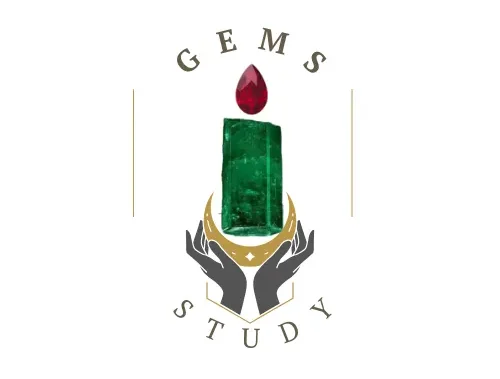
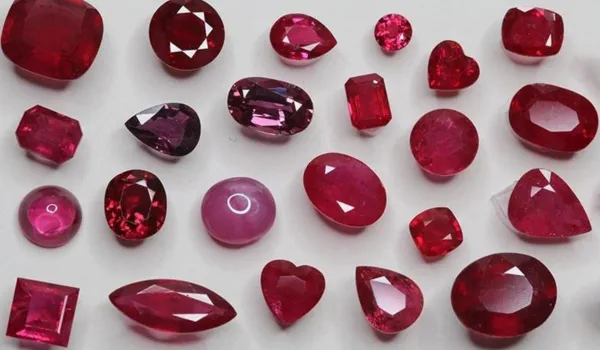
1 comment
[…] is famous worldwide for its beautiful rubies and high-quality jadeite jade. When it comes to bright pigeon blood red rubies, the Mogok Valley, […]